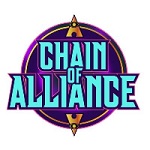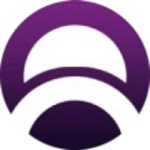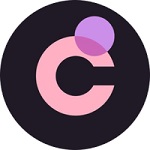Chromia Ecosystem
| Projects | Status | Date start | Raised | Launchpad | Ecosystem | X score | Interest lvl | Industry | ||
|---|---|---|---|---|---|---|---|---|---|---|
| TBA | $2,4M | Medium | Gaming & VR +2 | |||||||
| TBA | $2,7M | High | Gaming & VR +2 | |||||||
| TBA | High | Blockchain Infrastructure +1 | ||||||||
Past IDO IEO | Feb 04, 2021 | $2,2M | Medium | Gaming & VR +3 | ||||||
What is Chromia network
Chromia is an open source framework that realizes relational database technology in blockchain.
The core objective of Chromia is to make a significant contribution to shaping innovative approaches to blockchain and to make it much easier for the community to create and deploy new and existing DApps.
In fact, Chromia is a linked blockchain needed to simplify the process of creating complex and scalable applications. And the primary audience of the project is DApps developers of different levels.
Investors & partners
Key partners of the Chromia ecosystem include:
- Battle Derby
- Chain of Alliance
- LaunchJoy
- ChoccySwap
- My Neighbor Alice and more others.
Chromia investors include the likes of:
- Arrington XRP Capital
- BitScale Capital
- JRR Group
- NGC Ventures
- OnBlock Ventures
Key solutions of Chromia blockchain
A special feature of Chromia is the implementation of the mechanism from an adapting Postchain system. This solution is offered to corporate customers of ChromaWay AB.
In addition, Chromia is actually a standalone L1 blockchain, while being an extension that is fully compatible with the L2 EVM for Binance Smart Chain and Ethereum. Most blockchains, regardless of their scalability, struggle to handle complex datasets.
As such, the relational blockchain aims to solve this scalability problem while creating a new blockchain standard. But that’s not all. Chromia is maximized compatibility not only with Ethereum EVMs, but also with a number of other blockchains. This allows more projects to utilize the unique features and model implemented in the Chromia blockchain.
Let’s look at the core system structure of Chromia system.
In general, the blockchain uses unique code, called the relational blockchain and a proprietary programming language called Rell.
It is similar to the SQL environment and gives developers the potential to use the security and immutability of the system to store and process information with maximum efficiency.
Also involved in Chromia is the PBFT or eBFT adaptive consensus algorithm. Thanks to this mechanics more than one nodes can participate in the network and verify transactions and blocks, ensuring the security and reliability of the entire system.
On top of that, Chromia is built on multiple protocols to manage networks, accounts and token exchanges between blockchains:
- FT4 (Flexible Tokens, version 4)
- Originals
- ICMF (Interchain Messaging Facility)
- ICCF (Interchain Confirmation Facility)
Note that Originals is one of the new features that includes a new NFT standard. It works as a native standard for the Chromia system, which is a significant improvement on the existing ERC721 or BEP721 standards.
It should be noted that the relational blockchain concept was inspired by traditional relational databases, which excel at handling complex queries and structured data. By integrating these concepts into the blockchain structure, Chromia provides more efficient data processing. At the same time, the elimination of direct gas charges was driven by the need to improve user experience and adoption.
Let us note one of the key concepts that Chromia implements. This is the ability for users to make gas-free transfers of digital assets. How does it work?
The fact is that deployed applications based on Chromia function as sidechains, but they can each be based on a different underlying. Under this model, any application can either charge some fee to its participants in the native CHR token or can allocate CHR reserve for computing power, so users can make transactions without paying fees.
Key advantages of Chromia
- Integration of relational databases
- Innovative economic model
- Potential for wider adoption
- Scalability of decentralized applications
- Improved user experience of DApps
- Ability for developers to create secure applications using principles they are already familiar with
Token CHR
The CHR token is a native cryptocurrency to improve Chromia. The CHR token is the main unit of account for the ecosystem, facilitating better communication between investors, developers and users. The CHR token can also be used for staking, for linking ERC20 assets and for distributing rewards to developers and nodes.
Conclusion
As we can see, the Chromia developers, like most software developers, prefer to embrace uncertainty and flexibility rather than spend resources on creating the “illusion of predictability”. This means that the team works very flexibly and introduces new features as needed.
Ultimately, the blockchain solution that Chromia offers, with the ability to deploy sidechains, offers clear benefits, and the flexible solutions within the system allow it to build relationships with the wider society. For example, the Chromia team advised a committee submitting a report on the potential use of blockchain in the Swedish public administration.




